Design
Wisp is a NPC (non-playable character) from the Nintendo series, Animal Crossing: New Horizons. What sets Wisp apart from the other villagers in Animal Crossing is that he only appears every other night, and he gets easily spooked when talking to the player that he disperses into 5 different spirit fragments across the island. The player is tasked to find these 5 spirits and return them to Wisp, and Wisp will reward them with an item that’s either costly or new.
The prototype Wisp is a simple pouch inspired by the ghostly figure. It utilizes an LED feature that allows the user to see further into their pouch and locate items with better visibility. There is also an application feature that logs what items are taken in or out of the pouch, and keeps track of any change that’s placed in it.
Who
An inventory for people who misplace things easily.
What
A pouch that lights up to help people find items they are looking for.
Why
To help people locate and keep track of their items.
Prototype
I sketched out a rough draft of my fabric prototype to make the most out of my resources. On the right shows my initial sketches: I wanted to recreate the Bell Bag of Animal Crossing, which focuses on storing money only. However, with my selection of fabrics, I shifted my focus of design and functionality to match Wisp because of the color scheme.
I wanted to emphasize the layout of the fabric would fold and where the seams would go before trying it out. I eventually used a piece of paper and taped the edges to determine the shape of my pouch and placement of the LED before moving onto the actual sewing portion of this assignment.
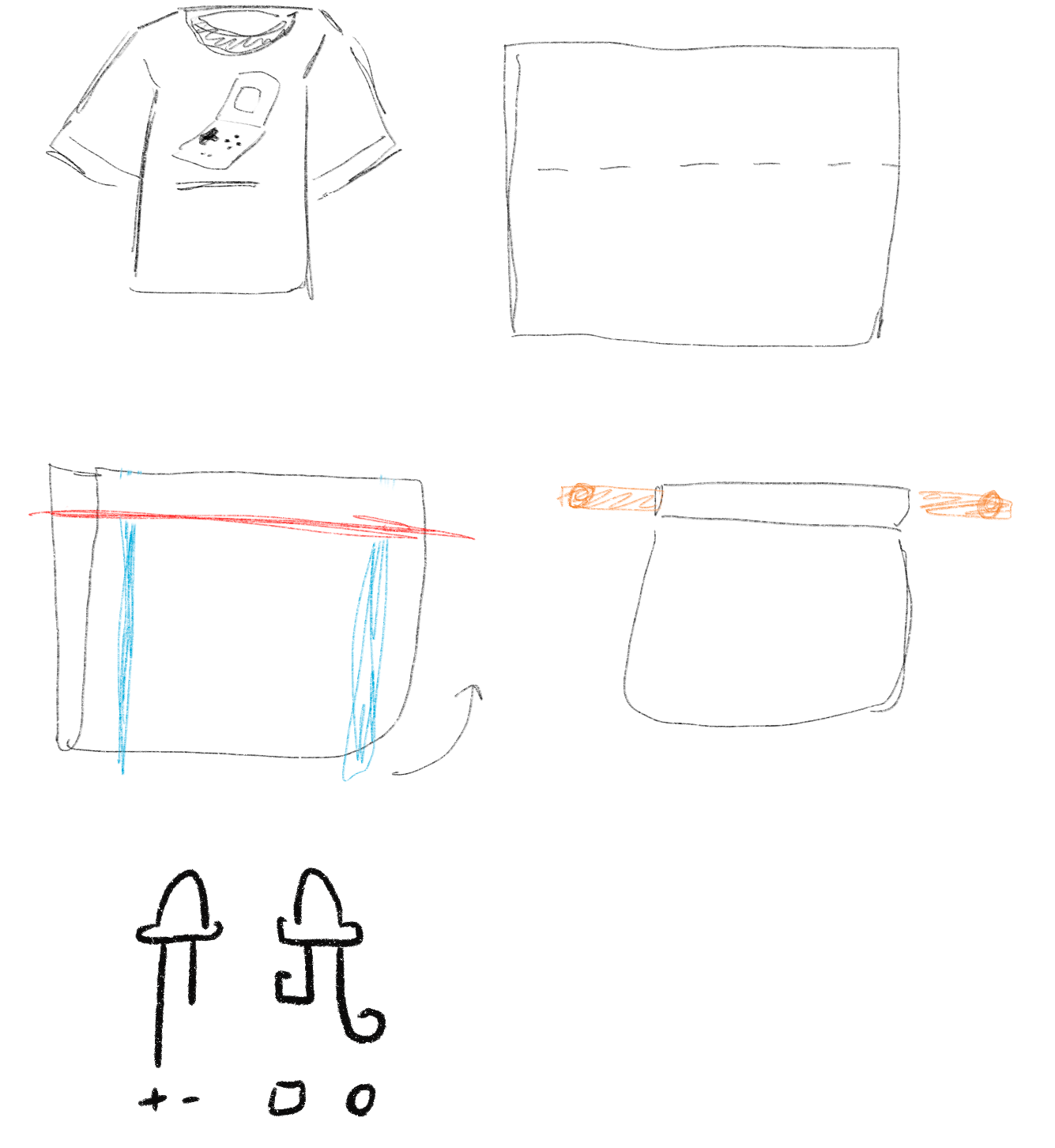
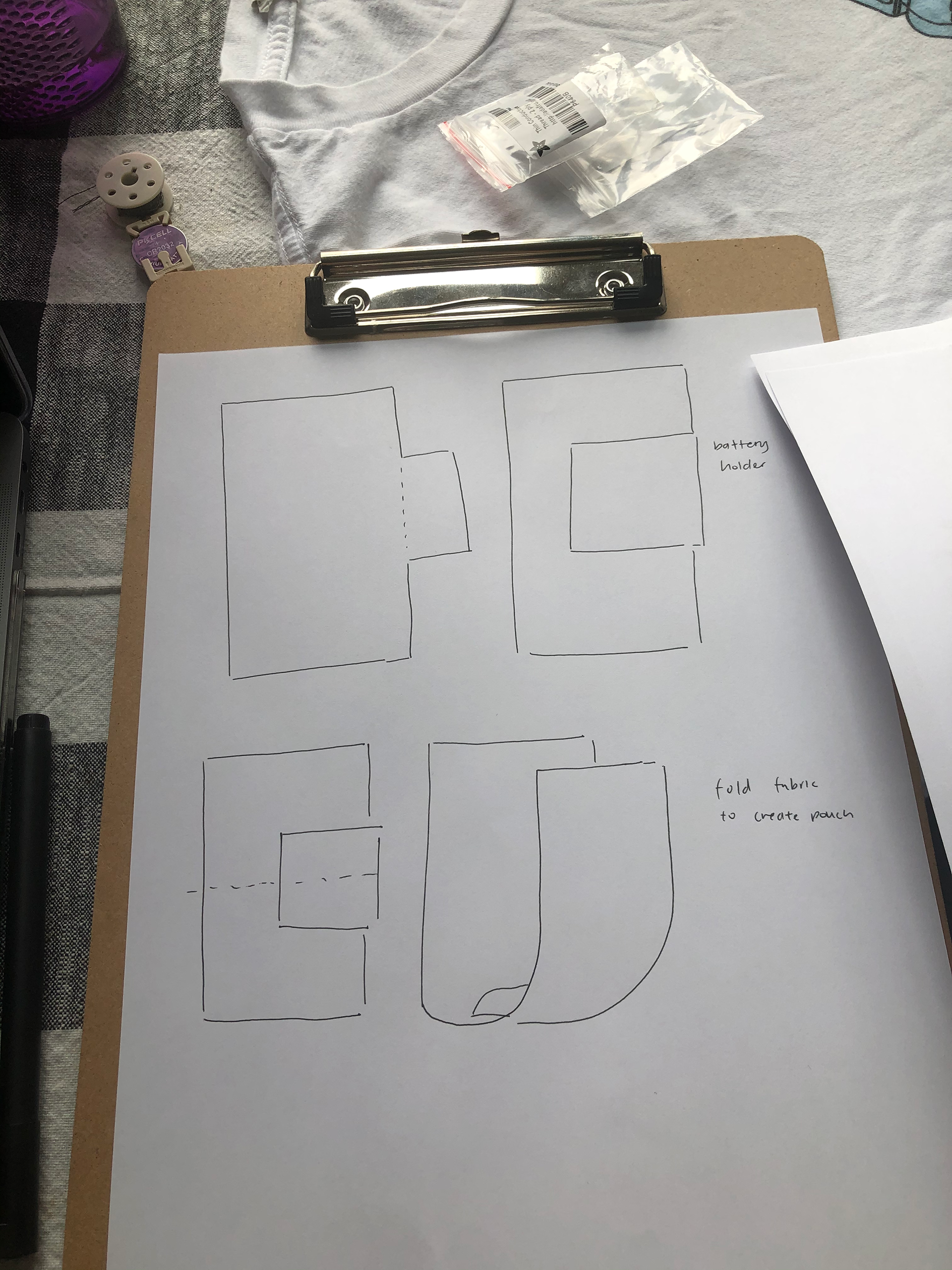
I used an old T-shirt and cut out the bottom half of it to create my prototype. Using this section, I cut off a third of it and used it as the main body of the pouch. I sewed the open pieces together to create a pouch-like shape, and using the bottom liner of the t-shirt, I pulled a shoelace through the section to create a drawstring.
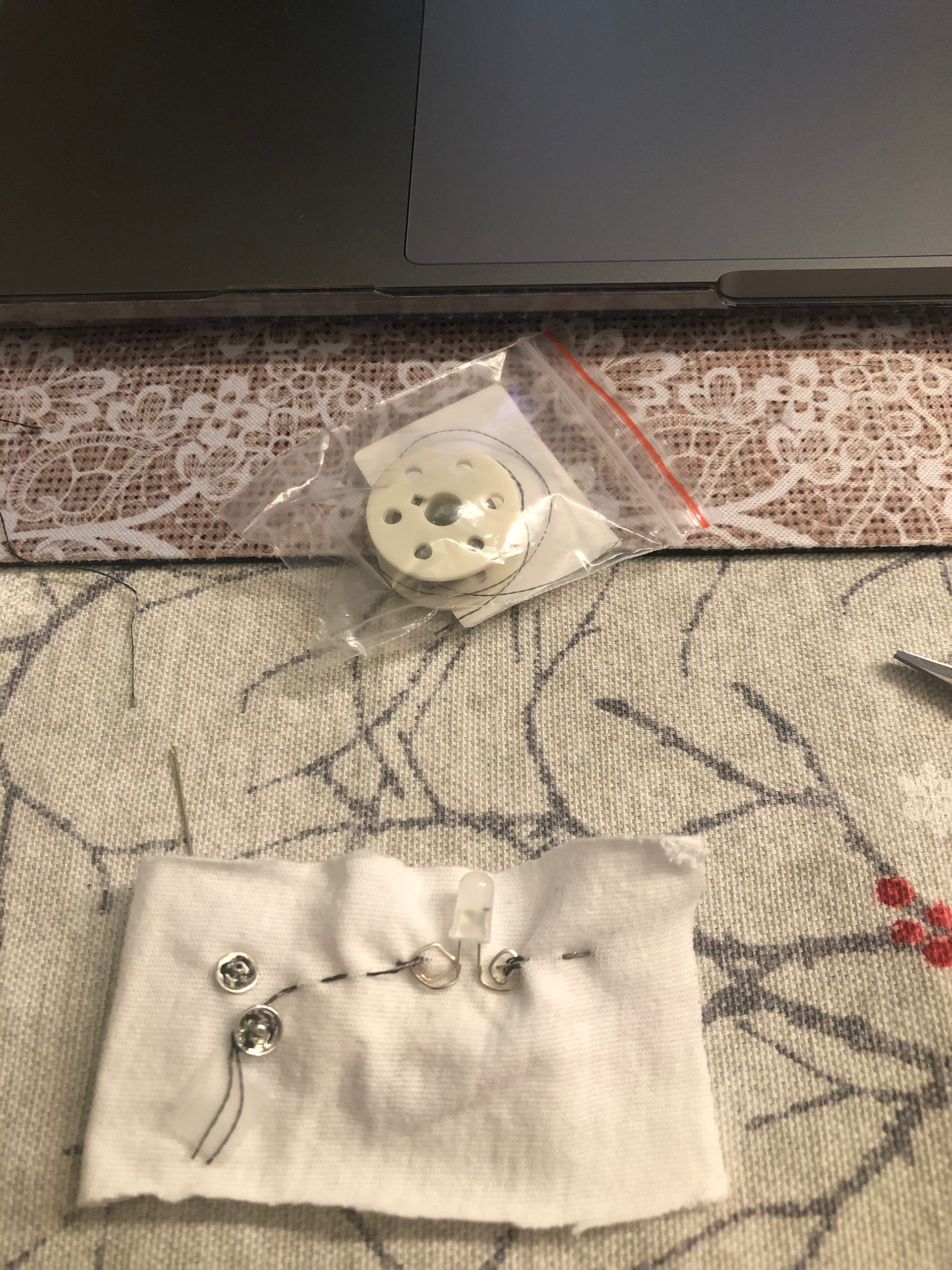
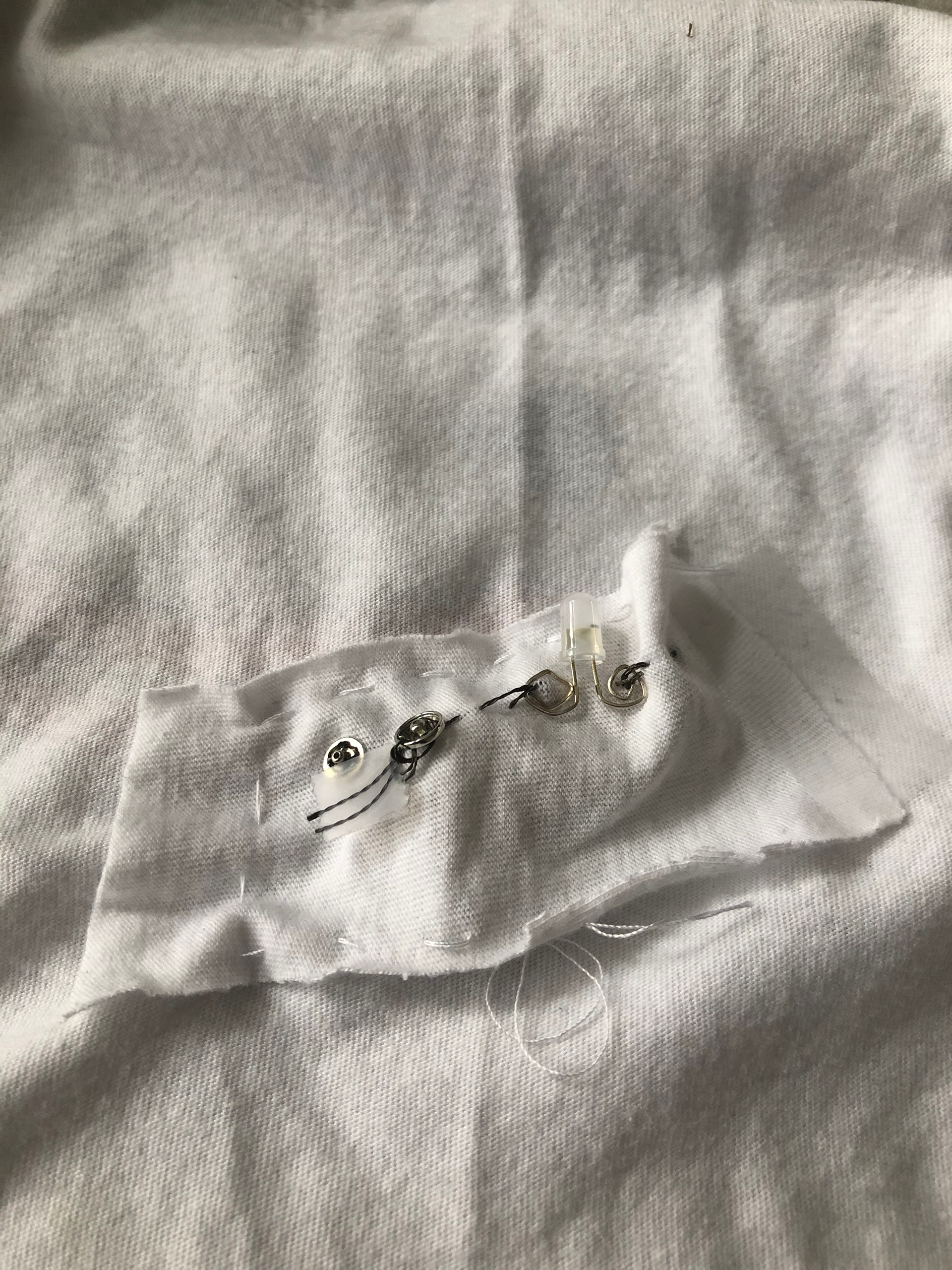

For the LED, I followed the Adafruit embroidery tutorial to figure out how to sew the LED into the fabric using the conductive thread. Using pliers, I bent the legs of the positive leg into squares, and the negative leg into circles. Afterwards, I cut a rectangle piece of fabric and sewed the battery on one side of it, and sewed the LED onto the other side. For the positive leg and positive end of the battery, I added one half of the snap to each so that the circuit could have a switch. I wasn’t able to tie the conductive thread together in a knot, so I quickly taped them together to make sure they wouldn’t get tangled or loosen.

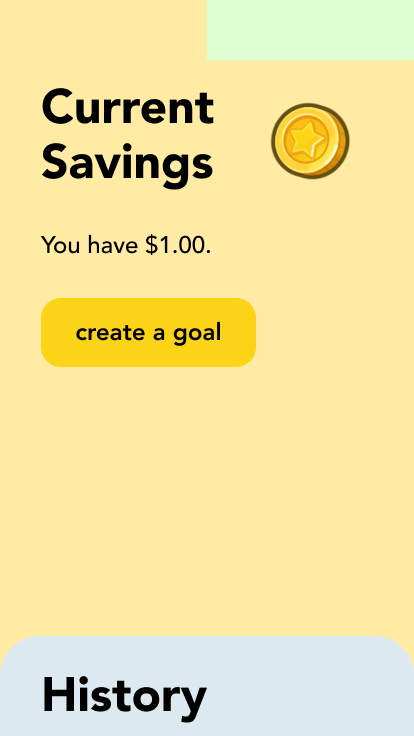
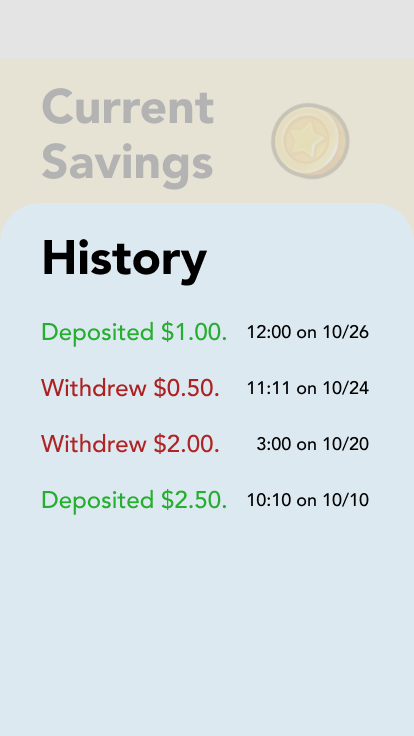
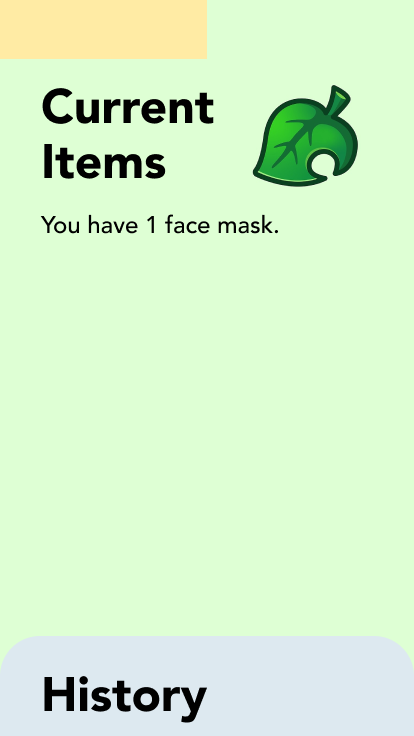
I quickly prototyped an interface for the pouch to demonstrate how the inventory system works. Initially, I wanted to make this prototype focus on working in place of a savings account, but later shifted its focus on keeping track of items entirely. This was quite a last minute decision, hence why there are two separate tabs for the categories.
Analysis
I filmed a 60-second demo that demonstrates the Wisp prototype, and came across a few challenges during my recordings. I completed my assignment and decided to record it the following morning, however, I sewed my snaps too close together that my circuit was on all night. I learnt very quickly that a 5V coin battery does not last long when it’s left on overnight. I had to surgically cut the battery out, because it was sewed into the prototype, and replace it. Instead of patching up the stitch-work, I ended up taping it for recording purposes.
With my video demo complete, I presented it to a few peers for critique in my class and recorded the following insights.
Desirability
My peers thought that this was a very cute project! With context, they enjoyed how it represented an Animal Crossing character and that its functionality was related to their personality (though it’s important to note that they mainly wanted the pouch for pure aesthetic purposes instead of functionality ones). I did show my prototype to a family member and she did not respond in a similar fashion; they noted that the face looked like “a clown” without context, and that it was creepy. To summarize my takeaways:
• People appreciate the character design of the prototype, when they know the context of the character
• People mistake the character design for something else (Bowser Jr.’s cart, a clown, etc.)
• People mainly like Wisp for the aesthetics
Usability
The prototype was simple enough that my peers could understand how the light works, however, they weren’t sure what the application meant. Some critique included:
• Why are the two tabs of the inventory (items and money) separate? Could there be an overview of the prototype?
• What even is an inventory and how do I know I’m using it?
Feasibility
In terms of feasibility, I think that the simple light functionality could easily be incorporated into a pouch or bag. However, I think that being able to detect what items are put in the ‘inventory’ is hard to accurately keep track of. Another thing I noted was that people were worried about the waterproofing of the pouch; my peers considered whether the lighting would be able to handle any spillage or weight of items being pressed on it. I would consider the following in the future:
• Materials: Waterproof material for the entire pouch or for the casing of the circuit
• Placement of LED: Building the circuit in the pouch where it’s both secure and safe from leaks
• Clearer Interface: Make the app’s inventory functionality and visuals distinct
Takeaways
In the future, I think I would reiterate on the fabric prototype by creating a more uniquely shaped pouch that makes Wisp more recognizable (Ghost-shaped?). I also would reiterate on the design of my circuit by giving the snaps more space; my main issue for testing my prototype was that the circuit would automatically turn on by itself because the positive side of the conductive thread was too close to the positive leg of the LED, and the snaps were too close together that they would automatically turn on. Overall, I thought this project was a lot of fun and being able to make something that you’re passionate about feels less like an assignment and more of a hobby.
Video Demo
